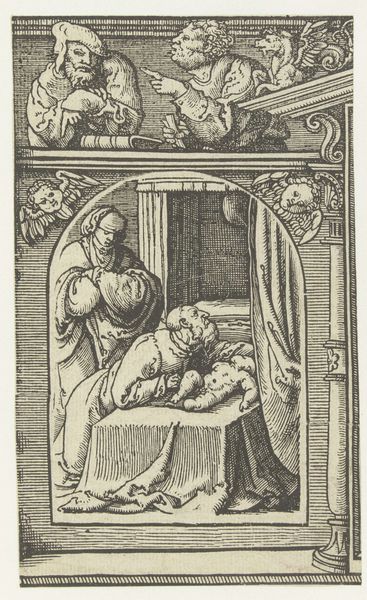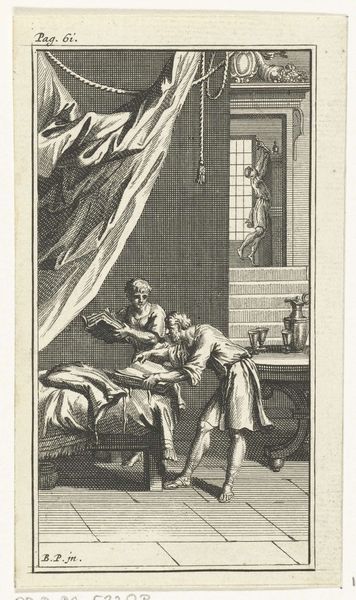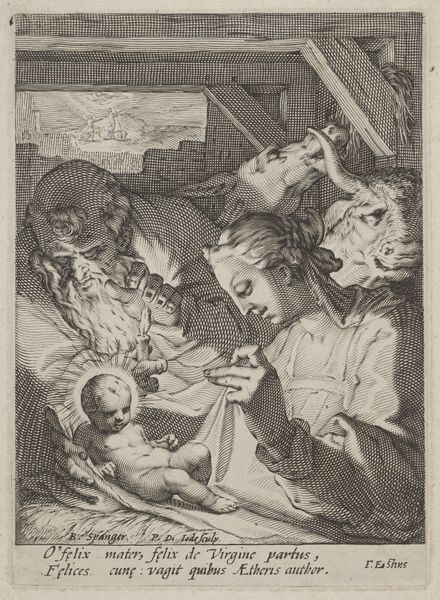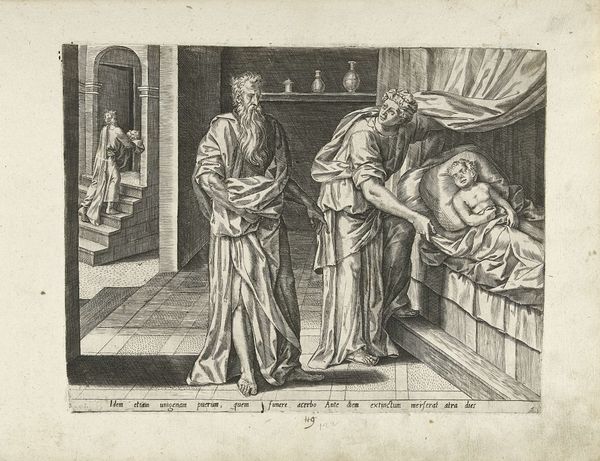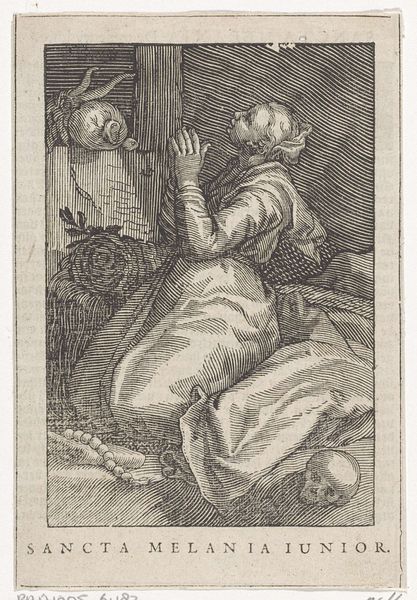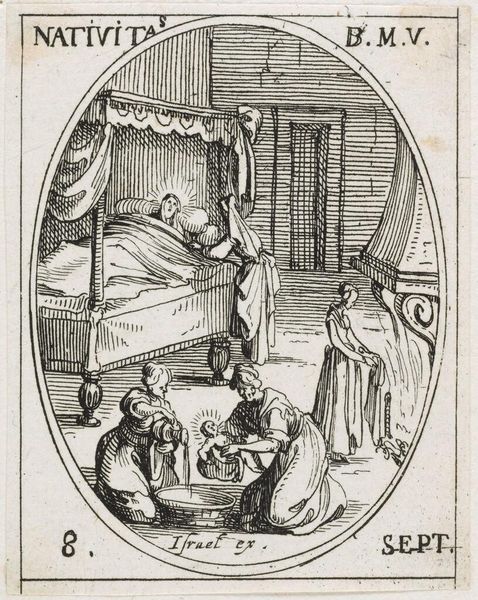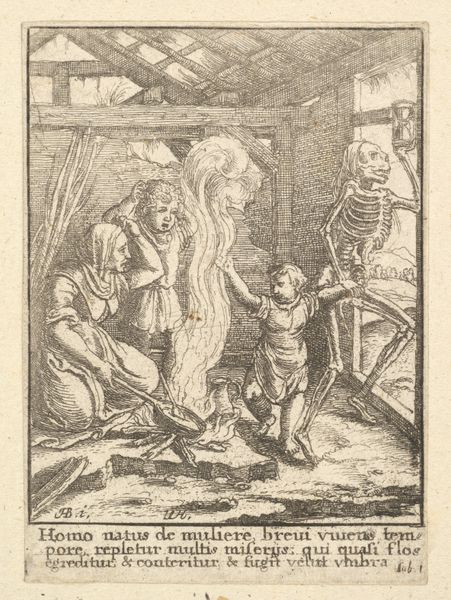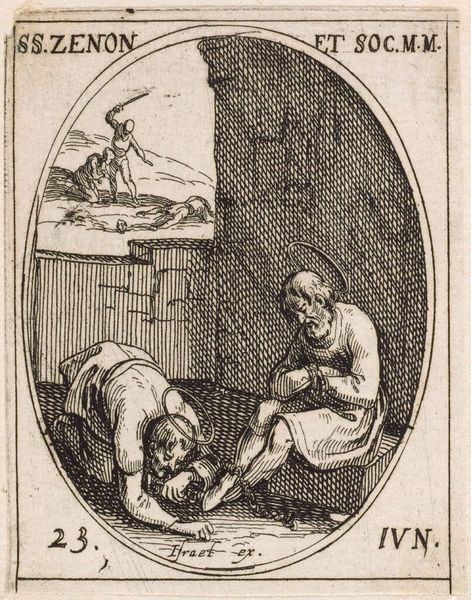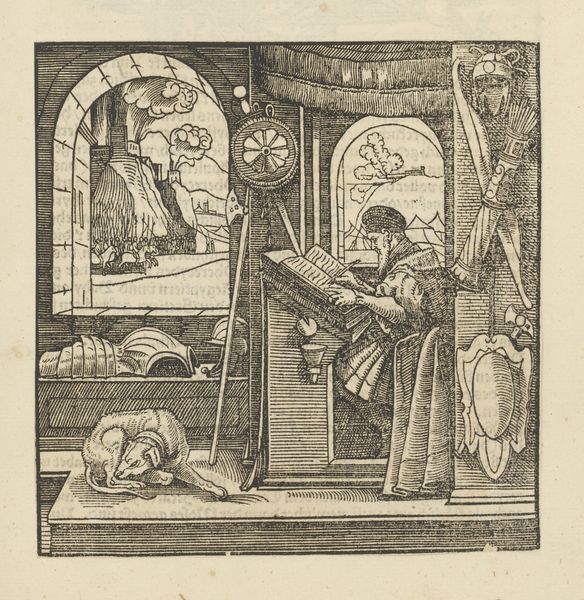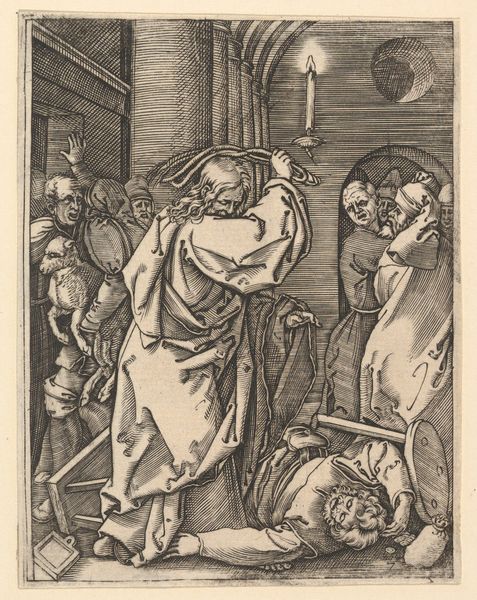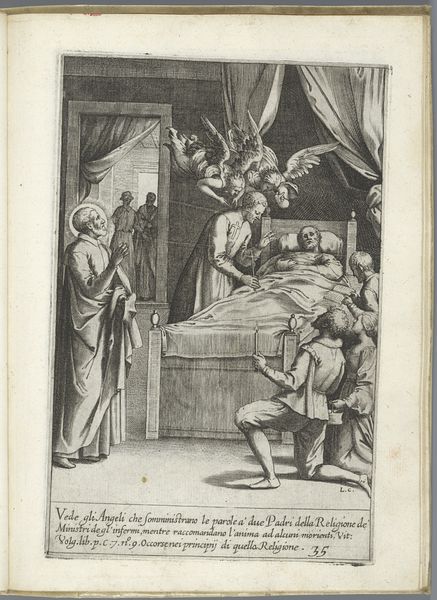
print, engraving
#
medieval
#
narrative-art
# print
#
figuration
#
genre-painting
#
northern-renaissance
#
engraving
Dimensions: height 152 mm, width 87 mm
Copyright: Rijks Museum: Open Domain
Curator: So much pathos conveyed with just line work! It almost feels melodramatic, like a little stage set. Editor: Indeed. What we're looking at is an engraving dating from around 1525-1530, known as "Elisa en de zoon van de Sumamietische", or "Elisha and the son of the Shunammite woman", currently held at the Rijksmuseum. Curator: Elisha! The story of the prophet! See, the architectural detail gives it such a dramatic weight—and those curious onlookers above, perched with their griffin... they definitely set a mood. Editor: They do add a layer. If we think of this within the context of the Northern Renaissance, that narrative drama—replete with accessible moral lessons—was highly valued. Elisha, after all, performs the miracle of resurrecting this woman's child. It would have spoken to the cultural preoccupation with death and divine intervention. Curator: Right, a direct channel to the celestial. That's powerfully captured by Anonymous. Although a print, the engraving really evokes the hand-worked quality. Every tiny mark tells a story—the way light and shadow are suggested, how the emotions flicker across the characters’ faces. It gives them a weight beyond their size, what, maybe eight inches tall? Editor: It is a relatively small piece with substantial presence. You know, thinking about it now, those cherubic heads around the arch—the heavy curtains—they create this almost womb-like protective space around Elisha and the child. It's really kind of striking. Curator: Womb-like—yes! Absolutely. A sanctuary for rebirth. And notice the woman's stance. She's almost pleading. Even in miniature, the emotions become larger than life. It echoes throughout art history. Editor: Absolutely, that timeless, potent tableau of life and death framed by our need for solace and the hope for miracles—well, what a perfect parting thought for those considering their journey today. Curator: Precisely, an enduring dialogue across the ages, meticulously rendered by an unknown hand.
Comments
No comments
Be the first to comment and join the conversation on the ultimate creative platform.
